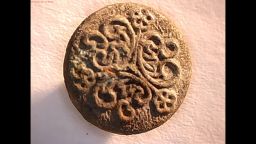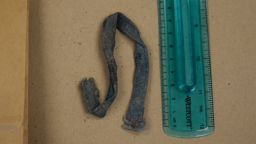Story highlights
New York millionaire has been tried three times in the death of his wife
Neither her body nor a murder weapon has been find
Cal Harris, standing trial for the fourth time in the killing of his estranged wife, Michele, was acquitted Tuesday by an upstate New York judge.
For more than 15 years, Harris has maintained that he didn’t kill his wife on September 11, 2001.
While the previous trials were before juries, Harris this time put his fate in the hands of State Supreme Court Judge Richard Mott, who found him not guilty of second-degree murder, according to Schoharie County Chief Court Clerk F. Christian Spies.
“I really appreciate those people who had their faith in me, and believed in me, and have stuck by me even though it wasn’t always pretty,” Harris said after the verdict.
“They robbed me of my life as a father to raise my kids,” he said.
Tioga County District Attorney Kirk Martin said in closing arguments that the Harris’ were going through a bitter divorce at the time of her disappearance.
Michelle Harris’ hairdresser testified that she heard Calvin threaten his estranged wife over the phone in July 2001, allegedly saying: “I will f—— kill you. I will make you disappear.”
Michele Harris’ body has not been found, nor has a murder weapon. Prosecutors argued that Harris struck her when she arrived at her home in upstate New York that night, then got rid of the body and the weapon.
He was charged with second-degree murder in 2005.
The trials that followed resulted in two convictions that didn’t stick, then a mistrial.
Harris’ legal team had said the difference in the latest trial was leaving his fate in the hands of “a neutral and fair magistrate.”
New evidence

Donna Aldea, one of Harris’ defense attorneys, said new evidence at the trial included items found in an outdoor fire pit at a home near the Harris home that was once owned by ex-boyfriend of the missing woman.
The man was last seen with her the day she went missing, the defense claimed.
Harris’ lawyer, Bruce Barket, said a bra strap, charred fabric that matched the color of clothing that Michele was last seen in, buttons and other items were found in the pit.

Cal and Michele Harris were raising their four children in their upstate New York home, which sits on a 200-acre estate in Tioga County.
Despite living together at the time she disappeared, the two were leading separate lives while finalizing their divorce.
One of the assets to be contemplated in the divorce: Harris’ $5.4 million net worth.
Barket told CNN in 2015 that this was not a motive for murder.
“The divorce was ending on friendly terms and ending on Cal’s terms,” Barket said.
Michele was last seen about 11 p.m. on September 11, 2001. The next morning, Harris noticed that Michele hadn’t made it home and called the family’s nanny, who found Michele’s car at the end of the driveway.
Harris, owner of a number of car dealerships, went to work.
“When he woke up that morning he thought Michele was just with her boyfriend or was out drinking as she had done on numerous occasions before,” Barket said.
In 2007, the jury of the first trial convicted Harris of second-degree murder.
Five months later, a judge overturned the verdict after a man came forward claiming he saw Michele Harris with another man in her driveway the morning after prosecutors alleged Cal Harris killed her.
In 2009, Harris went on trial a second time. That jury also convicted him.
After Harris served about four years in prison, the New York State Court of Appeals overturned the conviction, agreeing with Harris’ defense team that one juror had a preconceived notion about the case.
Last year, Harris’ third trial was declared a mistrial when the jury could not agree on guilt or innocence.
CNN’s Pilar Melendez, Sarah Jorgensen, Rob Frehse, Lawrence Crook III, Randi Kaye and Nadeen Shaker contributed to this report.
